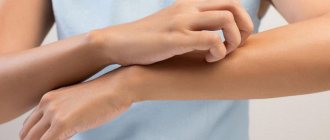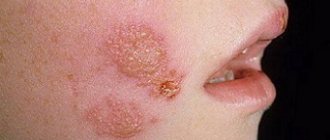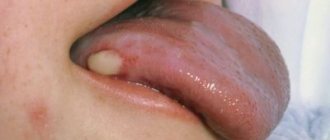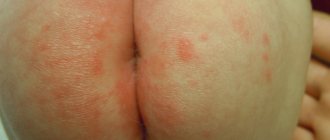There is no physical impact when there is cold, so for a long time such a reaction to cold was not considered a disease, since there is no allergen. Doctors began to classify this as an atypical or pseudo-allergy.
Nowadays, experts explain this reaction to cold by the fact that under the influence of low temperatures, the immune system, trying to protect the body, produces special biologically active substances that provoke allergies.
What causes allergies to cold?
There are many reasons for its manifestation, but they are based on skin contact with cold.
- Interaction with low temperature water: swimming in cold water, washing hands in excessively cold water.
- Wind with low temperatures, frosts. Cold allergy on the face of a child is common in winter, its provocateur is temperature fluctuations in the air outside and at home.
- Predisposition at the genetic level. The disease can be either acquired or transmitted from relatives. If the parents have a problem, the likelihood of manifestation in the child increases.
- Low temperature drinks and food. An allergy can develop after drinking ice-cold drinks or ice cream - in this case, swelling in the throat and tongue may occur, which negatively affects respiratory function. If such symptoms are noticed, it is necessary to avoid eating and drinking below room temperature.
- Taking antibiotics - they reduce the threshold of sensitivity and immunity, resulting in an increased likelihood of a reaction.
- Other diseases may be the culprits: tuberculosis, lupus erythematosus, problems with the thyroid gland, pneumonia, helminthic infestations, various cancers and abnormalities in metabolism. Allergies also develop after a number of diseases: mumps, sinusitis, dysbacteriosis, rubella, measles.
- Reduced immunity: in children, the protective functions of the body decrease after many illnesses. If a child is hardened and has a strong immune system, the development of a negative response to cold is unlikely.
- The presence of other diseases associated with the skin. With reactions to food components, medicinal compounds and contact allergies, the likelihood of the body responding to cold increases.
Main symptoms of cold allergy
- Pain, itching, burning sensation on the face and hands.
- Swelling of tissues, appearance of a rash, red, possible blisters. When you return indoors, the itching and swelling goes away, but the top layer of skin peels off.
- Sometimes the problem can be detected on parts of the body that are not in contact with frost: knees, hips, legs. And if you swim in cold water, the reaction may spread to the whole body.
#PROMO_BLOCK#
Allergy treatment
Cold allergies are not as harmless as they seem. If symptoms are not eliminated in a timely manner, conjunctivitis (due to excessive lacrimation) and streptoderma (due to constant scratching on the skin) may occur. Therefore, treatment must be carried out in a timely manner and under the strict supervision of a doctor.
The peculiarity of this type of allergy is that it can suddenly disappear as it appeared, or, on the contrary, it can worsen its impact, manifesting itself not only in winter, but also in the middle of the year. Therefore, fighting allergies is necessary.
In most cases, the doctor prescribes antihistamine therapy and an individual walking schedule. This schedule implies that children with high sensitivity to cold are contraindicated to go outside at -10 and -15 degrees.
In warmer temperatures, short walks are recommended. The skin is treated with a protective cream. It would be a good idea to take a course of vitamins to improve the functions of the immune system.
Additional manifestations
There are several other options for how an allergy to cold manifests itself in a child: children may experience a runny nose, cough (during a walk). Allergic rhinitis interferes with normal breathing, which occurs in warm conditions. Tears may indicate conjunctivitis of an allergic nature. The rash may be accompanied by frustration, vomiting, shortness of breath, feeling tired, and dizziness. They go away simultaneously with the skin reaction.
In warm weather, the symptoms subside after 30 minutes or an hour; very rarely, symptoms of cold allergy in children bother from several days to a week. The severity of the case depends on the affected area (volume) and the duration of cooling.
If a child is diagnosed with a cold allergy, then the symptoms and treatment in children are the task of the doctor. It is quite difficult to distinguish this type of reaction from other types of allergic manifestations, so you should not take any medications without consulting a specialist.
When can you suspect a cold allergy?
Upon contact with cold air:
- all areas of the body exposed to the cold become red and sometimes swell. The rash is dense, pink or whitish, accompanied by itching. After a few hours, the symptoms disappear without the use of medications. Symptoms in a child: some time after being in the cold, the cheeks not only turn red (which is an absolutely normal reaction), but also a rash appears, similar in appearance to a nettle burn, the child begins to itch, trying to reach his cheeks with his hands. The rash may also appear upon entering a warm room, spreading to the arms, and in very young children, to the inner surface of the thighs and legs, and knees.
- watery eyes and/or swelling around the eyes and lips, cracks, “jams” in the corners of the mouth, peeling of lips and cracking, and all this even with minor temperature changes.
- Sometimes a cold allergy can manifest itself as a common cold: a dry night cough, wheezing when breathing, a stuffy nose - and all this against the background of reddened cheeks.
Cold allergies can worsen and occur against the background of other diseases and be just their mask, for example, with a lack of vitamins and microelements, dysfunction of the thyroid gland, vegetative-vascular dystonia, etc.
Some patients note a general tendency to allergic reactions or their manifestations in childhood; sometimes a rare form occurs - hereditary cold allergy. It is often accompanied by a burning sensation rather than itching and is more of a reaction of the body to the wind than to the cold.
If there is another allergic disease, for example atopic dermatitis, food allergies, allergic rhinitis, then cold allergies will be more severe. Often, cold allergies begin after suffering from acute respiratory viral infections or other infectious diseases.
Diagnosis measures
To determine this disease, a provocative test with an ice cube is often performed.
An ice cube wrapped in plastic is placed on the baby's forearm. In a ten-minute time period, the specialist monitors the body’s response.
In case of a strong reaction, symptoms of the disease appear within a minute, in other cases - after 20 minutes. Redness, itching, and blisters appear in the application area.
Confirmation of an allergy to cold is a signal to parents to undergo additional examinations to diagnose more serious pathological and infectious diseases. In this regard, tests for blood biochemistry, hepatitis B and C, immunoglobulin testing, rheumatic tests and others may be prescribed.
Prevention
Prevention of cold allergies in children is simple. To minimize the risk of such a reaction in the child’s body, it is enough for parents to do everything possible to eliminate the effect of cold on the skin. To do this, check how the child is dressed and monitor his clothes. Sensitive areas of the skin are additionally protected.
Also, review your child's diet. It is very important to switch him to proper nutrition. Try to exclude flour, fatty, fried, and various sweets. The menu should be dominated by fresh vegetables and fruits, fish, and lean meats.
What else can you do?
Allergy to cold in children is treated by reducing contact with cold; this approach gives the best result. In winter, try to dress your child in warm scarves, mittens (preferably high ones), a hat that is as closed as possible (balaclava and similar models), do not forget about the hood.
If your child is prone to a negative reaction to cold, and you have noted the accompanying symptoms, you should not allow the body to become hypothermic. When there is a strong cold wind blowing outside or the thermometer is below 15 degrees, it is better to avoid walking.
Hardening procedures can be carried out after visiting an allergist and pediatrician for consultation.
Why is cold allergy dangerous and is it worth fighting it?
The first thing a person suffering from a cold allergy feels is itching, and it can range from completely unnoticeable, in the form of a slight tingling sensation, to pronounced and completely unbearable.
Secondly, this condition can go away completely when entering a warm room, but usually itching, burning and rashes unsettle a person for several hours.
Thirdly, the manifestations of cold allergies gradually disappear within a few hours, but as a result, a headache may remain, blood pressure may decrease, etc. Of course, this makes a person uncomfortable in his social life!
They are rare, but still, with general hypothermia of the body, more severe, generalized allergic reactions may appear - such as angioedema or Quincke's edema, anaphylactic shock.
Protection with special equipment
Now many manufacturers produce special series for children, including creams and balms with protection from frost and wind. Preference should be given to formulations that have been tested, are hypoallergenic and have a greasy texture.
Such funds contain:
- paraffin;
- fish fat;
- beeswax;
- oils;
- antibacterial additives;
- herbal extracts.
Creams and gels are used according to the instructions, but on average they are applied 30 minutes before going outside.
Recommendations for parents
If your child suffers from cold allergies, then this circumstance must always be remembered. To minimize the risk of exacerbation of the disease, eliminate or at least minimize the effect of the allergen on the body. Among the main recommendations:
- Do everything you can to keep your immune system normal.
- Take vitamin supplements in spring and summer.
- Do not allow your child to become hypothermic or overheated.
- Monitor your child’s diet: it is necessary to exclude fatty, fried, sweets, and citrus fruits from his diet.
- Try to reduce the time your child spends outside during frosts.
- Make sure that all parts of your body are covered when walking in cold weather.
- An hour before the walk, it is recommended to treat the skin with a protective cream.
- Give your child a warm drink just before leaving.
Many doctors recommend using Doromarin to treat cold allergies in a child. These are vitamins for children that can significantly increase the body's immune capabilities. The complex contains exclusively natural ingredients. The basis is the Far Eastern kelp angustataangustata. It fills the body with a sufficient amount of vitamin components.
Of particular importance for the skin is iodine, which protects it from spasms. A complex of micro- and macroelements also has a positive effect on the dermis. They can significantly increase immune abilities, due to which the body better tolerates cold exposure.
Cold allergy is a serious disease that requires proper attention. If its signs appear in children, be sure to visit a doctor who will select a comprehensive treatment. You should not ignore the manifestations of such a reaction from the body.
Strange symptoms
By the way, a reaction to cold weather is the most obvious symptom of a cold allergy. But, if you carefully observe the child, you can detect other symptoms of this strange disease. For example, a sudden runny nose if the child drank iced tea or left a hot room into a cool one. Or skin irritation after washing your hands with cold water, or symptoms of conjunctivitis after washing with cold water.
Before you lament that your child gets sick from just one sip of cold water, do a test. You can do it yourself.
Allergists recommend placing a piece of ice on the inner bend of the elbow for a couple of minutes. During a normal reaction, the skin will, of course, turn slightly red, but that’s all. But the skin in this place may not only turn red, but also turn pale or begin to itch, burn, a blister may appear, and, most importantly, all these symptoms persist for a very long time or even appear after the ice has been removed.











